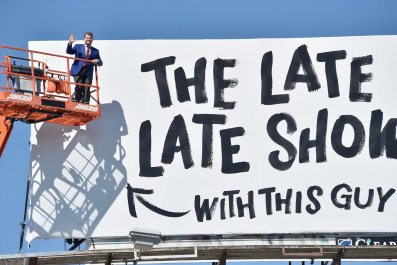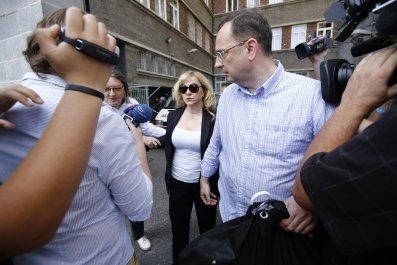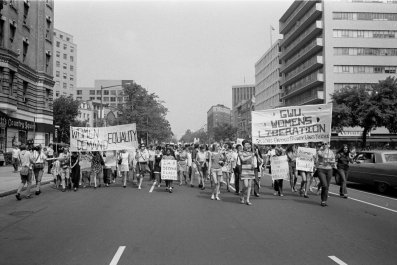In the 1988 David Mamet film Things Change, Joe Mantegna's character seeks a Mafia don who's "the guy behind the guy behind the guy." There is an appetite among rock fans for that kind of powerful obscurity, and while it may not be entirely healthy for the music (rock impresario Bill Graham said dancing died when people started asking each other who the bass player was), it's certainly lucrative for those who want to pull back the curtain.
Imagine if the entire Wizard of Oz was about the man behind the curtain. The recent success of documentaries like 20 Feet From Stardom (about some of rock's best female backup singers) and Muscle Shoals (about the legendary Alabama studio session men) proves the point; while both did well in theaters, they really took off online and on demand, the true refuge of music nerds. They're like the film equivalent of Mojo magazine, with its endless supply of new stories about old artists in their prime.
Now comes The Wrecking Crew (in theaters, and on iTunes and video on demand, on March 13), about the loose confederation of studio musicians in L.A. who played behind everyone from Frank Sinatra to the Byrds. While no one thought Sinatra was playing anything (he couldn't, nor did he write music, though he certainly knew what he wanted his records to sound like), fans of bands like the Byrds and Buffalo Springfield assumed the guitarists in those groups knew how to play their instruments. The Monkees famously pretended to be working in the studio for a reporter while the real musicians hid in the other room. A member of the Association, a band that played virtually not a single note on its biggest hits of the '60s ("Along Comes Mary," "Cherish," "Windy"), told one of the Crew, when asked why they wouldn't list the musicians' names on a jacket, "We don't want kids to know we didn't play on the record."
Produced and directed by Denny Tedesco, son of the Crew's legendary guitarist Tommy Tedesco, this doc was a long time in the making.There is footage of Dick Clark and Frank Zappa when they were still alive, and Cher when she could still move her face. Denny began filming and interviewing people in the mid-'90s, when his father was diagnosed with cancer. Tommy was a big soulful guy who managed to be a good father and husband while working 90 hours a week. At its best, The Wrecking Crew is a paean to work and the men (and one woman) who managed to play while they worked and made making hits look easy.
The group got its name from drummer Hal Blaine (whose opening beat to "Be My Baby"—boom-boom-boom pow! boom-boom-boom pow!—is one of pop music's most thunderous), who says older studio musicians, mostly a suit-and-tie crowd, were dismayed by the newcomers. "We come in wearing blue jeans, smoking and the older guys said, 'They're gonna wreck the business.'" (Some of the musicians, notably bassist Carol Kaye, say they were known as the Clique and have gone on to dispute the film's emphasis on Blaine and Tedesco.)
Not that the Crew were a bunch of rockers. Most of them came up with jazz and classical training—though Blaine says he got his best education working in strip clubs in the '50s—and started playing rock and roll because that's where the money was. Guitarist Al Casey began listening to 45s and bending the strings a bit: "I got to where I could play that stuff better than they could," he says. The Crew recorded two singles for the Byrds, with only Roger McGuinn playing along, in an hour (one of them was the No. 1 hit "Mr. Tambourine Man"). When the band insisted on doing it themselves the second time in the studio, it took 77 takes to get "Turn! Turn! Turn!" right. (That, too, went to the top of the charts.)
Kaye was the one woman of the bunch; her bass lines built the foundation for the Beach Boys' "Good Vibrations" and "California Girls," not to mention the "Mission: Impossible" theme, "Wichita Lineman" and thousands of other songs and jingles. There were other women in the business then, she explains; they just didn't last. "Most women in the '50s would play until they got married. It was more important to have a 'Mrs.' in front of their name than to have a career."
Her attempt to define Phil Spector's Wall of Sound (Spector worked almost exclusively with the Crew at Gold Star studio, owned by David Gold and Stan Ross) and the musicians' contribution to it is enlightening: "More like a lost feeling," she says of the background they added to Spector's most magisterial production, the Righteous Brothers' "You've Lost That Loving Feeling." "Despite the baffles we all leaked into each other's mikes. It was a combination of leakage and echoes; plus we were all really tired after the 35th take. It had a real relaxed feeling."
Relaxed yet imposing—that might be a good description of Spector's sound, and the Crew's as well. While Spector worked his musicians almost sadistically, usually not even running any tape for the first three hours, most artists and producers put themselves in the Crew's hands. "One year I was making more money than the president of the United States," says Kaye.
One of rock's best-known bass lines came not from Kaye but Chuck Berghofer, a regular for producer Lee Hazlewood, who played on Nancy Sinatra's proto-dominatrix classic "These Boots Are Made for Walking." "If I hadn't been available that day, I'd probably be selling insurance somewhere," he says. (Of the song's lyric, Sinatra observes, "It's harsh and abusive for a guy to sing"—as the late Hazlewood performed it—"but perfect for a little girl." Kitten with a whip!)
While Muscle Shoals suggested that there was something in the water down there in Alabama that made that studio's house band, the Swampers, so special, The Wrecking Crew makes a compelling case for hard work and timing. Almost none of the cohort came from L.A. (Who does?) Tedesco came from Niagara Falls, and saxophonist Plas Johnson couldn't wait to get out of the segregated South. The New Orleans native had that sultry sax sound rock bands wanted. He played on the 1962 hit "Surfer's Stomp" and was one of the Crew members who came to resent their anonymity. "Worse than not getting the money was not getting your name on [the record]," he says. "They got some white kid just out of high school and put him on the road."
Most of the members interviewed (and more than a few passed away in the 20 years it took Tedesco to finish the film) are more philosophical. Blaine, one of rock's most influential and ubiquitous drummers, lost everything in the wake of one of several disastrous marriages, and worked for a while as a security guard in Arizona. In the divorce settlement, he sold every gold record that lined his walls but returned to play with everyone from the Captain and Tennille to Steely Dan and became one of the first sidemen to be inducted into the Rock and Roll Hall of Fame, in 2000.
Occasional Crew member Leon Russell, looking like a pimp Santa with his dark glasses and a cane, started off playing demos for $10 a song. "I got to eat that day," he says of that time. And though he says most of the hit recordings he did with Hazlewood and producer Snuff Garrett ("This Diamond Ring," "Gypsies, Tramps and Thieves") weren't really "my cup of tea," they wouldn't have sounded as good without him.
Most of the time, the musicians honored in The Wrecking Crew were working on dross and jingles, the daily diet of session men everywhere. Playing for geniuses like Spector or Brian Wilson was their good fortune, but those producers and arrangers were just as lucky to have these musicians. Cher, who was a teenager when she started recording with the Crew, has some of the most evocative memories in the film. "There was always a Mad magazine being passed around," she said of those sessions. Of the volatile, unstable Spector (now serving 19 years to life for second-degree murder), she recalls, "Phil was walking in another universe. In his mind, it was all him. These guys were doing what he couldn't do."
Correction: This article originally incorrectly stated that Don Randi was a guitarist; he is a keyboardist. The guitarist quoted was Al Casey, another member of the Wrecking Crew. In addition, this article incorrectly implied that Phil Spector owned Gold Star studios, where most of his "Wall of Sound" recordings were made. The studio was owned by David Gold and Stan Ross.




























